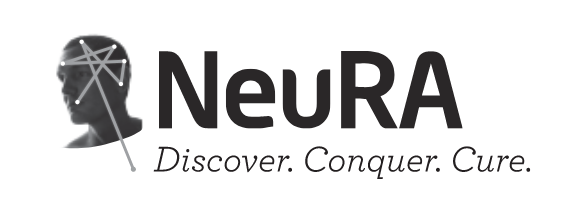The #PEDroTacklesBarriers to evidence-based physiotherapy campaign to tackle the four biggest barriers to evidence-based physiotherapy:
1. About the campaign
About the campaign. Portuguese version
About the campaign. French version
About the campaign. Italian version
La campagna #PEDroTacklesBarriers alla pratica della fisioterapia è disponibile in italiano
Welcome to the #PEDroTacklesBarriers to evidence-based physiotherapy campaign. The campaign will help you to tackle the four biggest barriers to evidence-based physiotherapy.
This campaign was inspired by a recent systematic review by Matteo Paci and colleagues that investigated the barriers to evidence-based physiotherapy. The review included 29 studies reporting the opinions of nearly 10,000 physiotherapists. Lack of time was the most frequently encountered barrier and was reported by 53% of physiotherapists. This was followed by language (36%), lack of access (34%), and lack of statistical skills (31%).
From May 2022 to April 2023, the campaign will delve into each of the four biggest barriers to evidence-based physiotherapy. You will hear from physiotherapists who have encountered these barriers and developed strategies to overcome them. You will also learn more about the methods used to conduct, analyse, report and interpret randomised controlled trials, to help you tackle the barrier of lack of statistical skills.
Each month we will release tips on how to tackle a particular barrier to evidence-based physiotherapy. We encourage physiotherapists from around the globe to work collaboratively to implement the most relevant strategies into your practice.
The campaign will conclude with some real-world examples of how physiotherapists have overcome these barriers and used evidence to make positive changes to their practice and improve the outcomes of their patients.
#PEDroTacklesBarriers is supported by World Physiotherapy, Australian Physiotherapy Association, Società Italiana di Fisioterapia, Société Française de Physiothérapie, and Koninklijk Nederlands Genootschap voor Fysiotherapie.
Please join us in the ‘PEDroTacklesBarriers to evidence-based physiotherapy’ campaign to help tackle the biggest barriers to evidence-based physiotherapy. You can follow the campaign on this webpage or via the PEDro blog, Twitter or Facebook.
2. Time
Lack of time is the most common barrier to evidence-based physiotherapy. Many factors contribute to this, including a high workload, competing priorities, efficiency in all 5 steps of evidence-based physiotherapy (Ask, Acquire, Appraise, Apply, Assess), lacking resources, lacking confidence, and being overwhelmed by the amount of evidence and the process of changing practice.
Ten clinicians share some strategies they use to tackle the barrier of lack of time in the #PEDroTacklesBarriers to evidence-based physiotherapy campaign.
 |
Nosipho Zumana Mtotoba Mafikeng Provincial Hospital, South Africa Nosipho emphasises quality over quantity. She says that “everybody in life does not have time, but we try to accommodate and do what we can within the time that we are given.” |
 |
Kate Scrivener Concentric Rehabilitation Centre, Australia A key strategy to tackle the time barrier suggested by Kate is to use synthesised research. Kate says “guidelines provide the most important evidence for clinical practice” and that “systematic reviews have the potential to be strong enough to change what we do in clinical practice.” |
 |
Nicholas Draheim Movement Solutions, Australia Nick suggests making evidence part of your staff meetings by “identifying areas that the team need to develop knowledge and skills in and task staff with bringing relevant high-quality clinical research to the meeting”. |
 |
Michele Marelli Università degli Studi del Molise, Italy Michele dedicates time to reading new articles. He says that “specialising in specific fields in musculoskeletal care” has also helped him tackle the time barrier. |
 |
Daniel Treacy South Eastern Sydney Local Health District, Australia Daniel suggests a journal club that is focused on a practice or question over a period of time will facilitate implementation. Daniel emphasises “that, in addition to reading relevant research, journal clubs should include planning and testing how the new practices are implemented in the clinic’s busy work schedule.” |
 |
Nehal Shah Bhopal Memorial Hospital and Research Centre, Bhopal, India Being in a routine of reading articles has made Nehal more efficient. Every morning she puts an article in her pocket so that it is on hand when she has some spare time. |
 |
Govinda Nepal Kathmandu University Hospital, Nepal Like many physiotherapists, Govinda has a long commute to work. He uses this travel time to read high-quality research. |
 |
Yvette Black Bloomfield Hospital, Orange Health Service, Australia A mentor once said to Yvette “it’s not that you don’t have time, you need to reframe it and make time.” She suggests using your diary to make considering evidence a normal part of your routine. |
 |
Sean Kaplan Home visiting physiotherapist, South Africa Sean seeks to “know what you don’t know.” You can collaborate with colleagues or friends to take action on this using relevant evidence. |
 |
Laura Crowe-Owen Therapy for Life, Australia Laura provides some great tips for the strategic use of social media. Suggestions include “following researchers who produce meaningful articles, rather than the loudest person in the room, and always read the articles.” |
This month seven more clinicians talk about how they tackle the time barrier for the #PEDroTacklesBarriers to evidence-based physiotherapy campaign.
 |
John Tan Singapore General Hospital, Singapore John recommends finding like-minded colleagues that spur you on to help tackle the time barrier. He says “it is important to stay curious and committed plus develop the habit of inquiry.” |
 |
Fairuz Boujibar Rouen University Hospital, France Fairuz thinks that spending 30 minutes per day thinking about evidence is within reach of many physiotherapists. She says “having physiotherapy students in your department is an opportunity for mutual learning.” |
 |
Francesco Ferrarello Azienda Usl Toscana Centro, Italy Francesco suggests that “Reading regularly will make it easier and increase confidence”. If you are new to reading research, start by reading one relevant article per month. |
 |
Alison Hoens University of British Columbia, Canada Alison is a Physical Therapy Knowledge Broker, a position partly funded by the Physiotherapy Association of British Columbia. She says “get involved in your professional association in order to access resources and meet people who are deeply engaged.” |
 |
Ruth Chua Singapore General Hospital, Singapore Ruth reminds us that evidence-based practice will help ensure that treatment is effective and will benefit your patients. Ruth says that “enrolling in a residency program provides lots of opportunities for implementing evidence into practice.” |
 |
Matt Jennings South Western Sydney Local Health District, Australia Matt provides some system-level guidance to use the time you do have to make a difference. He says that “the culture around time is really important, what you prioritise and how you support teams to provide the best care is critical.” |
 |
Harriet Shannon University College London, United Kingdom Harriet thinks that team ethos is critical for making time available. She says “it starts with a team decision that we are going to be the change makers who are going to implement evidence-based practice.” |
3. Language
Language is an important barrier to accessing and implementing evidence-based physiotherapy in many countries, with English being the dominant language used to publish and disseminate evidence-based research and guidelines.
Five physiotherapists and physiotherapy groups share how they have tackled the language barrier for the #PEDroTacklesBarriers to evidence-based physiotherapy campaign.
Tiê Parma Yamato, Brazil
 |
Tiê Parma Yamato is a researcher where English is her second language. Tiê prioritised learning English to overcome the language barrier as most research is disseminated in English. Initially, she relied heavily on translation services (i.e. Google translate), took English courses, and read a lot in English. She travelled to Australia to further immerse herself in the English language. As she became more familiar with the language, she engaged with more complex vocabulary and discussion, giving her more in-depth understanding of the literature and evidence-based practice. |
Zbyszek Wroński, Poland
 |
PEDro was recently translated into Polish, which has led to a large increase in PEDro-related searches from Poland and increased the accessibility of evidence-based practice among Polish physiotherapists. The PEDro resource is now used in physiotherapy courses in Poland to teach and promote evidence-based practice. Accessibility to research has improved with this resource, however language continues to be a barrier since most research articles are published in English. |
Cynthia Srikesavan, India
 |
A small group of Tamil speaking physiotherapists trained from Tamil Nadu in Southern India have been running a monthly virtual journal club since 2020. One strategy they use to overcome the language barrier is to use both English and Tamil during their journal clubs. For example, they introduce initial article structure and concepts in Tamil, have their more formal presentations in English, and end with broader group discussions back in Tamil. This, amongst other strategies, improves their English and understanding of evidence-based physiotherapy. |
Anne-Kathrin Rausch, Germany
 |
Physioscience is a platform that publishes research in the German language and is the Official publication of Germany’s Society for Physiotherapy Science. To make research more accessible, Physioscience publishes work in both German and English. In every issue, Physioscience publishes three ‘Gelesen & Kommentiert’ articles. These articles are in German and include a summary (abstract) of the published work, followed by a critical appraisal and comment to discuss the topic within the context of physiotherapy in Germany, Austria and Switzerland. |
Nynke Swart, the Netherlands
 |
Nynke Swart says KNGF (Royal Dutch Society for Physical Therapy) have developed 16 clinical guidelines that are relevant for physiotherapy practice in the Netherlands. When developing guidelines, they mainly focus on Dutch and English studies. The evidence together with other considerations is translated into easy-to-use recommendations for physiotherapists by a group of experts. KNGF disseminate their guidelines in both Dutch and English to increase accessibility. |
4. Lack of access
Evidence-based physiotherapy cannot be implemented if there are barriers to accessing research. Below are two videos on strategies to tackle the barrier of accessing full text articles. The first focuses on accessing full text using the links in PEDro. The second outlines strategies that use other non-PEDro methods.
Access to full-text articles is crucial for all health professionals trying to provide evidenced-based care. Full-text articles are needed to appraise the quality and applicability of research for a clinical question. They are also needed for a detailed description of the intervention.
When a PEDro search locates an article of interest, clicking on the title hyperlink brings up its “Detailed Search Results” page. In 2022 we have recently estimated the percentage of articles in PEDro that have free full-text access via these links. Access to free full text was available for 60% (95% confidence interval 53% to 67%) of the articles sampled. This is higher than the free full-text access that was available via PubMed (47%, 95% confidence interval 40% to 54%).
We provide up to 5 links to full text for each article in PEDro. The number of links will depend on whether the article is indexed in PubMed or PubMed Central, if the article has a DOI number, and if the journal has a website. These links may be to free full text, or you may need a subscription to the journal or to pay to view the article. Access to free full text is determined by the journal publishers. The links to full text in PEDro are listed in order of likelihood for accessing free full text. With links at the top of the list being more likely to link to free full text than the links at the end of the list.
The links are:
1. PubMed Central
PubMed Central is a free full-text archive of biomedical journal literature produced by the United States National Institutes of Health’s National Library of Medicine. In January 2022 it contained over 7.6 million full-text articles that have been published in journals that have an agreement with PubMed Central to archive their content. Clicking on the “PubMed Central” link on the PEDro “Detailed Search Results” page will take you directly to the article in PubMed Central. You may be able to view the full-text article on this website or open the article in Portable Document Format (PDF) by clicking on a link.
2. DOI
This is the acronym for Digital Object Identifier, a unique alphanumeric string assigned by the International DOI Foundation to identify content and provide a persistent link to its location on the internet. Clicking on the “DOI” link on the PEDro “Detailed Search Results” page will take you directly to the article on the journal’s website. Not all journals will allow you to access full text free of charge. In this case you may be asked to login or to pay to access the article. If a subscription is required, you may be able to access the article via the library provided by your university or health service your local medical library.
3. PubMed
Produced by the United States National Institutes of Health’s National Library of Medicine, PubMed is a free database containing over 34 million citations and abstracts of biomedical literature. The “PubMed” link on the PEDro “Detailed Search Results” page will take you to the PubMed entry for the article. This PubMed entry may contain links to full text from other sources.
4. PDF locator
Some search engines on the internet are designed to find free PDF documents. In PEDro we have created a link that uses PDFSearchEngine.net to search for PDF copies of the article. Clicking on the “PDF locator” link on the PEDro “Detailed Search Results” page will take you to the search results generated by PDFSearchEngine. These results are ranked for relevance using a built-in algorithm. You will need to scan down the list of search results to see if a link to full text is available for your article of interest. We suggest that you look at the first two pages of search results.
5. Publisher
The last option for accessing full text is via the website of the journal using the “publisher” hyperlink on the PEDro “Detailed Search Results” page. Accessing full text will require additional navigation through the journal website in order to locate the issue that your target article is published in. Not all journals will allow you to access full text free of charge. In this case you may be asked to login or to pay to access the article.
Saurab Sharma, Nepal
 |
As a physiotherapist, researcher, and educator in Nepal, Saurab Sharma often faced barriers to accessing full-text research articles that are behind a “paywall”. Saurab provides some innovative solutions on how to access full-text articles freely in low and middle-income countries where resources are scarce. For example, digital archives like PubMed Central or Hinari provide options to search for articles in specific languages and can provide free access to full-text articles. Other good resources for accessing free full-text articles are journals or publishers that publish ‘open-access’ articles such as Journal of Physiotherapy, PLoS and BMC. The Physiotherapy Evidence Database also provides links to accessing full-text articles, some of which are freely available. Research published in 2022 showed that PEDro provides access to 60 % of the articles sampled from the PEDro database, compared to PubMed which provides access to 47% of full-text articles. In this video, Saurab explores these resources and other strategies to address the barrier of access. |
5. Lack of statistical skills
A lack of statistical skills is a common barrier to interpreting evidence and implementing evidence-based physiotherapy. Three clinician-researchers including the Scientific Editor of the Journal of Physiotherapy, tackle the barrier of lack of statistical skills by discussing the methods used to conduct, analyse, report, and interpret randomised controlled trials.
This topic will be covered between October 2022 and January 2023.
 |
Aidan Cashin Exercise Physiologist and researcher, University of New South Wales, Australia Area of practice: Comparative effectiveness of interventions for people with chronic pain |
 |
Kate Scrivener Physiotherapist, educator and researcher, Macquarie University, Australia Area of practice: Post-stroke physiotherapy intervention and research |
 |
Mark Elkins Scientific Editor of Journal of Physiotherapy Area of practice: Physical and pharmacological therapies in respiratory disease and improving the understanding and application of published research by clinicians |
Interpreting comparative effects in trials
High-quality randomised controlled trials are a great source of evidence to support clinical decisions about which treatment may be best for the patients you work with. When interpreting the findings from trials, it is important to consider both how the outcomes are reported and what the treatment is being compared to.
Trial outcomes are often measured and reported as the ‘within-group’ change in outcomes or as the ‘between-group’ difference in outcomes. The distinction between within-group comparison and between-group comparison is critical when interpreting the results of trials. The between-group difference represents the treatment effect because it does not include natural history, regression to the mean, and nonspecific effects of receiving care which are included in the within-group change.
The treatment effect in trials is always comparative, meaning that the treatment benefit (or harm) is interpreted relative to the other treatment(s) in the trial. This is an important issue because the choice of comparison group will have a big influence on the interpretation of the size of the effect and whether the comparison was a fair test of the treatment.
Choosing the ideal comparison group is not straightforward and is heavily influenced by the research question (spanning the spectrum of efficacy to effectiveness research). For example, guideline-based care may be a suitable comparator if researchers were interested in investigating if the treatment was better than current practice.
The choice of comparison group is also important when trials are synthesised in systematic reviews. It is important that meta-analyses of systematic reviews combine trials with similar treatments, and trials that have similar comparison groups.
Understanding the importance of blinding in trials
There are numerous stakeholders involved in any clinical trial. These include patients and participants, therapists, researchers, outcome assessors and statisticians. Stakeholders are a source of bias in trials. This is because they can consciously or subconsciously influence procedures or results based on knowing whether a patient has been allocated to the intervention or control group. To minimise biases, a trial can ‘blind’ the stakeholders to which group participants are allocated. Blinding is considered successful if the stakeholder is unable to distinguish between the treatments applied to the groups.
Three important people or groups to be blinded in clinical trials include the:
1. Patient or participant: where the patient is unaware if they are receiving the intervention or control
2. Therapist: where the therapist is unaware if they are delivering the intervention or control
3. Assessor: where outcome assessor(s) are unaware if the participant being assessed had received the intervention or control
In most physiotherapy trials, it is very difficult to blind participants and therapists. For example, if interventions are physical or active (e.g. exercise), participants will know they are receiving the intervention and therapists will know if they are delivering it. In regard to blinding the assessor, blinding is successful if the assessor does not know which group the patient has been allocated to and outcome measures are objective (e.g. passive range of motion). However, when outcome measures are patient-reported or self-reported (e.g. pain), the assessor is considered blind if the patient was blinded.
Studies frequently report the occurrence of blinding in the title or abstract using terms such as ‘single blinded’ or ‘double blinded’. However, there is inconsistent use of these terms. For example, one ‘double blinded’ trial may have blinded the therapists and outcome assessors, while another may have blinded the patients and statisticians. Readers should investigate which elements of a clinical trial have been blinded and authors should avoid this ambiguous terminology and explicitly state who was blinded.
Some clinical trials attempt to blind patients to their allocated group by providing control interventions that are similar to active interventions. To assess the perceived similarity of the control and active intervention, some studies report the ‘treatment credibility’, where patients are asked ‘How convinced are you that you have received an active therapy?’. Similar treatment credibility between the active and control interventions usually indicates successful blinding.
Many people in a clinical trial can be blinded. Although blinding helps minimise biases, it is often difficult to blind every person. Readers need to assess how a lack of blinding could influence the conduct and reporting of a trial.
Understanding intention-to-treat analysis in a trial
Intention-to-treat is an approach to analysing results in randomised controlled trials. Intention-to-treat means that all participants who are randomized are included in the statistical analysis and analysed according to the group they were originally assigned, regardless of what treatment (if any) they received. Intention-to-treat is the recommended approach to analysing randomised controlled trial data.
Example:
In a hypothetical randomised trial, 100 participants with acute back pain were randomised to receive advice to stay active or bed rest. The primary outcome was back pain, assessed at baseline and at 4 weeks. Participants’ demographic and clinical characteristics (e.g. age, sex, pain scores, duration of pain, etc.) were similar in both groups at baseline.
At 4 weeks, 10 participants could not be contacted (7 in the bed rest group) and therefore they had no data at follow-up. An additional 10 participants did not adhere to the intervention they were initially allocated to – 3 patients randomised to advice to stay active group rested in bed and 7 participants in the bed rest group remained active.
There is a misconception that the best way to analyse data from this hypothetical trial would involve excluding participants who did not contribute to data at follow-up and those who did not adhere to the intervention. That approach is wrong as it introduces bias in results of the trial and does not represent what happens in everyday clinical practice.
Why is intention-to-treat important in a trial?
Both groups in the hypothetical trial were similar in relation to key demographic and clinical characteristics. Excluding participants who were lost to follow-up may create imbalance in these important characteristics, which in turn will bias the results of the trial. For example, perhaps the participants who were lost to follow-up had more severe pain and did not see any benefit with the recommended treatments and decided to ignore the researchers’ requests for data. Excluding them from the analysis would unbalance in a key clinical characteristic (pain intensity), as there were more participants with more severe pain who were lost to follow-up in the bed rest group. This is likely to generate biased treatment effects. Intention-to-treat analysis avoids this problem by preserving the original groups.
In clinical practice, it is common for patients not to do what clinicians recommend them to i.e. adherence is rarely perfect. Excluding trial participants who did not adhere to the assigned interventions (also known as ‘per protocol analysis’) creates an artificial scenario of perfect adherence that does not represent clinical practice and introduces bias to the results, which are typically overestimated. If adherence to treatments is poor, analyses by intention-to-treat may underestimate the magnitude of the treatment effect that will occur in patients who adhered to the treatment.
Understanding confidence intervals
How precise is the reported effect of an intervention in a trial for my patient?
The point of studies that compare the effects of treatments is to give readers an idea about what would happen if a patient received one treatment versus another. The study does this by producing an ‘effect estimate’. For continuous measures this is the between-group difference; the mean outcome score for the intervention group minus the mean outcome score for the control group. Note that we are not talking about p-values here, for a range of reasons p-values are not useful for informing treatment decisions.
It is important to recognise though that the effect in the study comes from a study sample. One implication of this is that the best the researchers can do is provide an estimate of the effect in the whole population. All estimates are imprecise, and it matters how imprecise they might be. The most important and useful tool researchers have to describe the precision of an effect estimate is the confidence interval.
Confidence intervals are often misinterpreted. They do not represent the range of effects that 95% of patients will experience, or the largest and smallest effects an individual patient can expect.
The technical explanation of a confidence interval is quite complicated but there is a way to interpret them that is close enough for clinical purposes. The confidence interval is the range of values that the population effect most likely falls into. So, if a trial has a mean between-group difference of 2 points, with a confidence interval from 1 to 3, then the best estimate of the treatment effect is 2 points, but it could be anywhere from 1 point to 3 points.
For a clinician, the range of plausible effects (values within the confidence interval) can form part of the discussion with a patient about treatment options in coming to a shared decision.
6. Putting it all together
The final two months of the campaign will showcase success stories of how physiotherapists have overcome different barriers to ensure patients receive evidence-based care. This month we cover success stories from an individual clinician-perspective in the fields of stroke rehabilitation and oncology.
Kate Scrivener (consultant physiotherapist Sydney, Australia) presents how implementing guidelines on stroke rehabilitation helped her patient (Sharon) gain significant function after a stroke.
- The context: Sharon was a stroke survivor in her 40s who was initially very disabled and discharged to an aged care facility. Fortunately, the facility had a rehabilitation centre on site.
- The evidence: Evidence-based clinical practice guidelines on stroke rehabilitation recommend high-intensity, intensive and task specific practice.
- The barriers to implementation: Sharon had several impairments, including motor planning issues and severe spasticity, which made implementing guideline recommendations very challenging. As a result, she initially needed two people to stand and couldn’t walk.
- The solution: With a lot of problem solving and trial and error, Kate and her team found a way to ensure Sharon performed intensive, task specific practice. Key strategies included using whole (vs. part) task practice linked to meaningful daily activities to overcome the motor planning issue and using a zimmer split to ensure her knee stayed extended during standing and walking practice.
- The outcomes: Between 6 and 12 months after her stroke, Sharon transitioned from walking with an aid, to without, and then to walking outside the facility. She eventually left the aged-care facility and now lives on her own in supported accommodation.
Rohit Raykar (first year graduate physiotherapy, Sydney, Australia) presents how evidence increased a cancer survivor’s motivation to exercise.
- The context: Rohit was a student on placement and treating a woman in her 60s who had ovarian cancer. Due to her chemotherapy, she was suffering from severe fatigue.
- The barriers to implementation: The patient had a hysterectomy to remove the ovaries affected by cancer and Rohit was seeing her to encourage her to exercise post-operatively. The patient was very reluctant to engage in an exercise program due to the fatigue and past negative experiences of exercising when fatigued.
- The evidence: Rohit had been told exercise was beneficial for people with cancer but wanted to see the evidence for himself. Using his searching and appraisal skills, he found a high-quality systematic review on the effects of exercise for people with cancer. The review showed that exercise has numerous benefits including reducing weight gain, cognitive dysfunction, lymphedema, and the risk of cancer relapse and secondary cancers just to name a few.
- The solution: Rohit communicated this evidence to his patient at the next session and she was astounded by the benefits. Rohit reassured her that any amount of exercise was a good starting point and that she could gradually increase this over time.
- The outcomes: Rohit referred the patient to an outpatient exercise physiologist where she was able to gradually increase her activity levels over time.
Asheigh (private practice physiotherapist in Toowoomba, Australia) presents how using guideline recommendations on stroke rehabilitation to modify her exercise program helped her patient (Wendy) improve her walking after a stroke. Wendy also shared her perspective on the changes to the exercise program and her improvement.
- The context: Wendy is in her 60s and had a stroke 5 years ago. She was walking 1km per day after a few years of rehabilitation but wanted to get back to 5km like before the stroke.
- The problem: Ashleigh noticed Wendy had plateaued with her improvements after a few years of rehabilitation. Wendy was mostly doing hydrotherapy and doing only 1-3 sets of exercises that were not task specific (e.g. leg extensions, sit to stand). Ashleigh decided to look for evidence to see if there’s anything she could do differently.
- The evidence: The most recent evidence-based clinical practice guideline on stroke rehabilitation recommends high-intensity, intensive and task specific practice. Ashleigh found the guideline easy to use to help adapt Wendy’s program to have more task-specific exercises relevant to her goals.
- The barriers to implementation: Ashleigh suggested Wendy needed to do more land-based training instead of hydrotherapy. However, Wendy enjoyed hydrotherapy and had made a lot of new friends there. There was a need to find a balance between what Wendy wanted to do, and what she needed to do to reach her goals.
- The solution: It was agreed that Wendy would continue hydrotherapy but she would also practice the land-based high-repetition exercises which were specific to her goals of walking more (e.g. 400-600 repetitions of moving the leg faster during the swing phase of gait).
- The outcomes: Walking speed improved from 0.8m/s to 1.3m/s over the course of a few months and walking distance improved from 1km to 2km per day.
Our final month features how a physiotherapy team implemented evidence-based physiotherapy in their service.
Nicole Stockill (physiotherapist at Toowoomba Hospital, Australia) presents the changes made to a balance class to bring it in line with evidence-based practice.
Maddie Jaeger (physiotherapist at Toowoomba Hospital, Australia). Maddie shares her experience working in a physiotherapy team that implemented evidence-based care into their balance class service. Maddie describes the features of the class, how participants coped with the challenges and intensity of the class, the changes in participants’ measured outcomes, and their achievement of goals.
The ‘#PEDroTacklesBarriers to evidence-based physiotherapy’ campaign has now concluded. We hope you have enjoyed the strategies and tips shared to help you overcome barriers to evidence-based physiotherapy.
PEDro acknowledges Joshua Zadro for coordinating this campaign. We also acknowledge all campaign contributors, translation work from Mariana Nascimento Leite, Junior Vitorino Fandim (Portuguese), Leonardo Pellicciari, Francesco Ferrarello, Michele Marelli, Matteo Paci, Paolo Pillastrini (Italian), Elodie Louvion, Magda Costa Castany, Céline Lesage, Matthieu Guémann et Guillaume Galliou (French), the PEDro Education and training committee and PEDro production support from Geraldine Wallbank, Courtney West and Anne Moseley.



